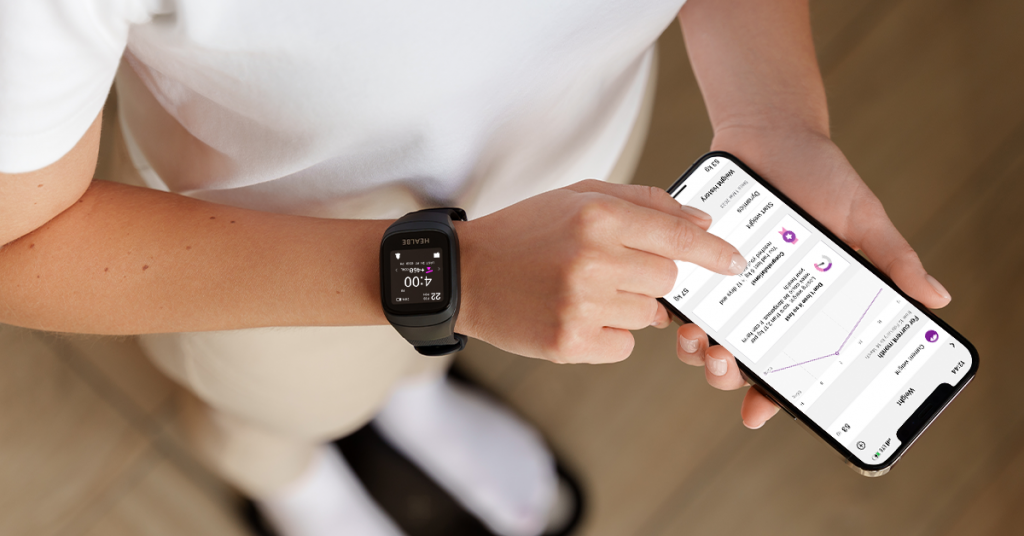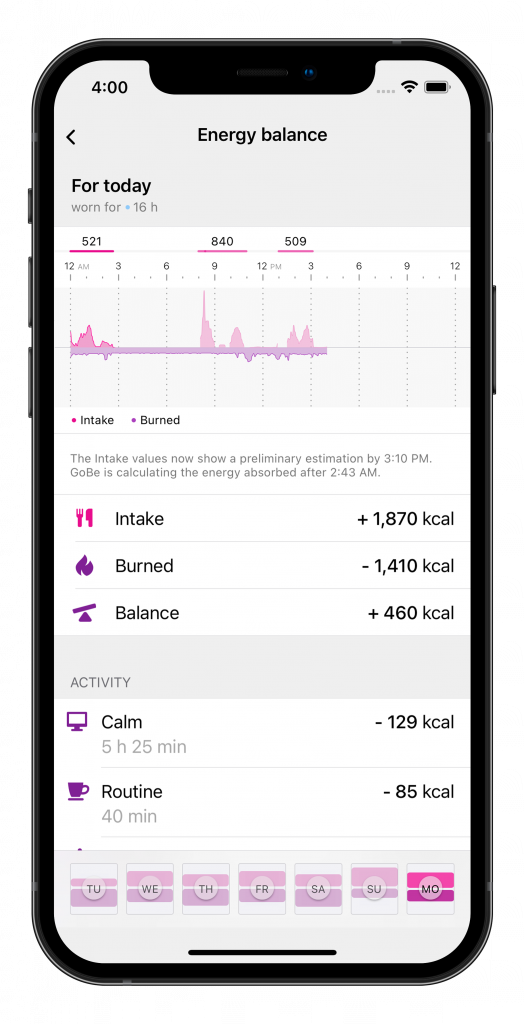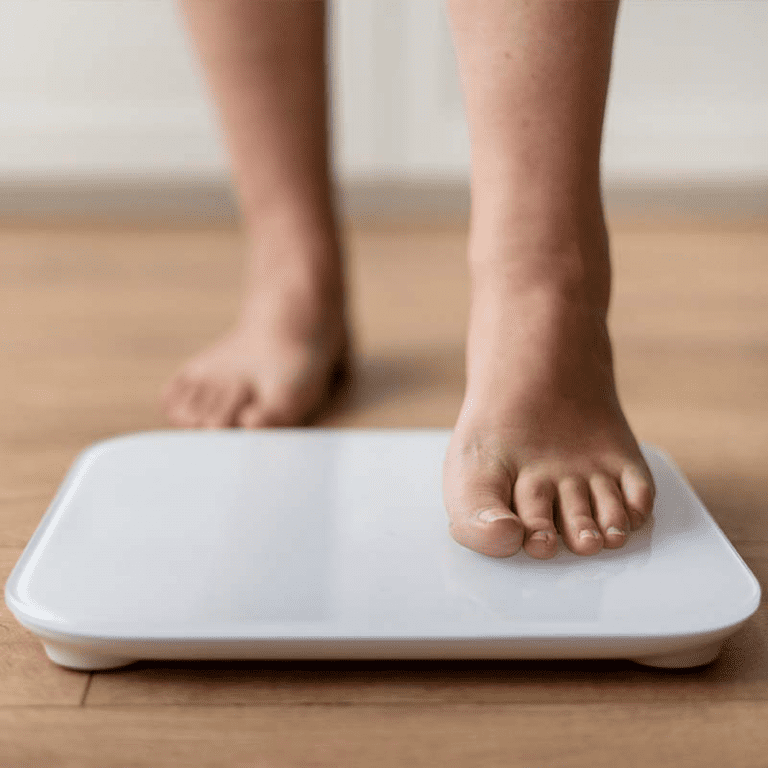

In this article, you will learn about what the weight indicator hides, what affects it, and what you need to know to be able to control it. We’ll also tell you exactly how Energy balance and calorie Intake from the HEALBE app are related to weight.

A person’s weight is a well-known vital body condition indicator that seems simple at first glance, but often incorrect weight-related expectations create problems and frustrations in the process of controlling and losing weight. A person’s weight is a well-known vital body condition indicator that seems simple at first glance, but often incorrect weight-related expectations create problems and frustrations in the process of controlling and losing weight.
The hardest part of weight loss and weight control is maintaining weight loss trends and results over time. Long-term benefits require long-term attention and lifestyle changes — 80% of people who decide to lose weight, according to research, gain back 50% of the weight lost after 2 years, and after 5 years that figure is already 80%.

Weight influencing factors
Knowing the factors that influence your weight is important, but it is even more important to understand what makes it up. If you don’t understand the physiology of weight change, you may find yourself in a situation where a perfectly normal temporary gain of 4-8 pounds over 2-5 days makes you nervous, increasing the risk of failure and refusal to continue the plan.

Most people who aim to lose weight are focused on reducing fat and increasing muscle mass by restricting diet and increasing exercise. However, our body has its own limits on muscle gain and fat loss per day due to physiological reasons — it simply cannot form half a kilogram of muscle or fat in a day.
Muscle mass (gain or loss)
10-35 grams per day
Only with steroid use or very good genetics can you add 50 to 80 grams of muscle in a day
Fat mass (gain or loss)
30-75 grams per day (In 8 weeks, men, when overeating 40% more than their norm, gained 4 kilograms of fat or 72 grams of fat per day, source)
100 to 150 grams per day. Running a marathon (42.195 km), a person burns about 300-330 grams of fat (if all energy is consumed from fat)
Even if we take into account that a person exercised every day for a week and had a caloric deficit, the most favorable outcomes would result in a weight change of 600-1000 grams of fat and muscle.
Then why are there large 2-5 kilogram weight fluctuations during the week, and what are they related to? The reasons for weight fluctuations during the day are water drunk and lost, glycogen dynamics (glucose storage after meals, its consumption between meals and during physical activity), food eaten, and all excreted waste products, including sweat.
Water
A fluid that a person has drunk or excreted from the body, including sweat
Gain or loss: 2000-3500 ml or 2-3.5 kg
Glycogen
Glucose is stored as a polymer: glycogen, which holds a lot of water. Glycogen is used to provide glucose and therefore energy between meals and during exercise
Gain or loss: 200-300 grams of glycogen and 800-1200 ml of water or 0.8-1.2 kg
Food
The mass of food inside our body at a given moment
Gain or loss: 1-2.5 kg
As you can see from the table, daily fluctuations of 2-3 kilograms (4-7 pounds) are normal and natural. If you want to lose weight by burning fat or gaining muscle mass, you should only track long-term trends for 2 to 4 weeks. This is the time when results start to appear and you can draw conclusions and adjust your strategy.
It is important to note that if you start to control your calories and train 2-3 times a week (especially if you haven’t trained before), after 2-3 weeks you may see that your weight increased instead of decreasing. This is because your body begins to form muscles, which in turn have more density and retain more water.
At this point, it’s important not to stop following your exercise and nutrition routines — the resulting muscle mass will use more energy, plus muscle tissue is smaller in volume than fat. The results of training can be seen in a reduction of waist circumference and biceps/thigh circumference increase. The thickness of skin folds is usually reduced too.

The main secret of fat burning and muscle gain is time. You don’t need to be heroic about workouts, but it is important to keep the pace in order to succeed. Even if you don’t manage to make it without breakdowns and overeating, it’s okay — the main thing is that the right trend is observed for longer periods.
GoBe is the best weight loss assistant because it allows you to monitor many important lifestyle factors at once: calorie intake and burn, sleep quality, physical stress, mental tension and hydration. By knowing these metrics, you’ll be able to track their long-term trends and how they affect your weight. The main profit is that the previous day’s caloric balance and your weight may not correlate because weight trends are not just about calories, as you now know.
The general recommendation for weight control is to weigh yourself regularly, without getting upset if you have gained a little weight. This is totally okay even if you have been following your diet. Weigh yourself 2-3 times a week and enter your weight into the HEALBE app so that it can calculate your basal metabolism more accurately and you can get more accurate calorie data!
We’ve prepared tips on how to weigh yourself properly.
Please note that HEALBE GoBe is not responsible for any content that purports to give medical advice or advice regarding fitness training, exercise, or diet. Always seek the advice of a physician or other qualified health provider with any questions you may have regarding a medical condition and prior to starting a diet or physical fitness program.